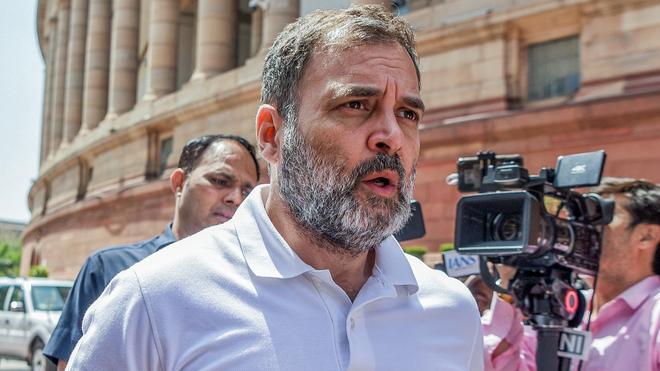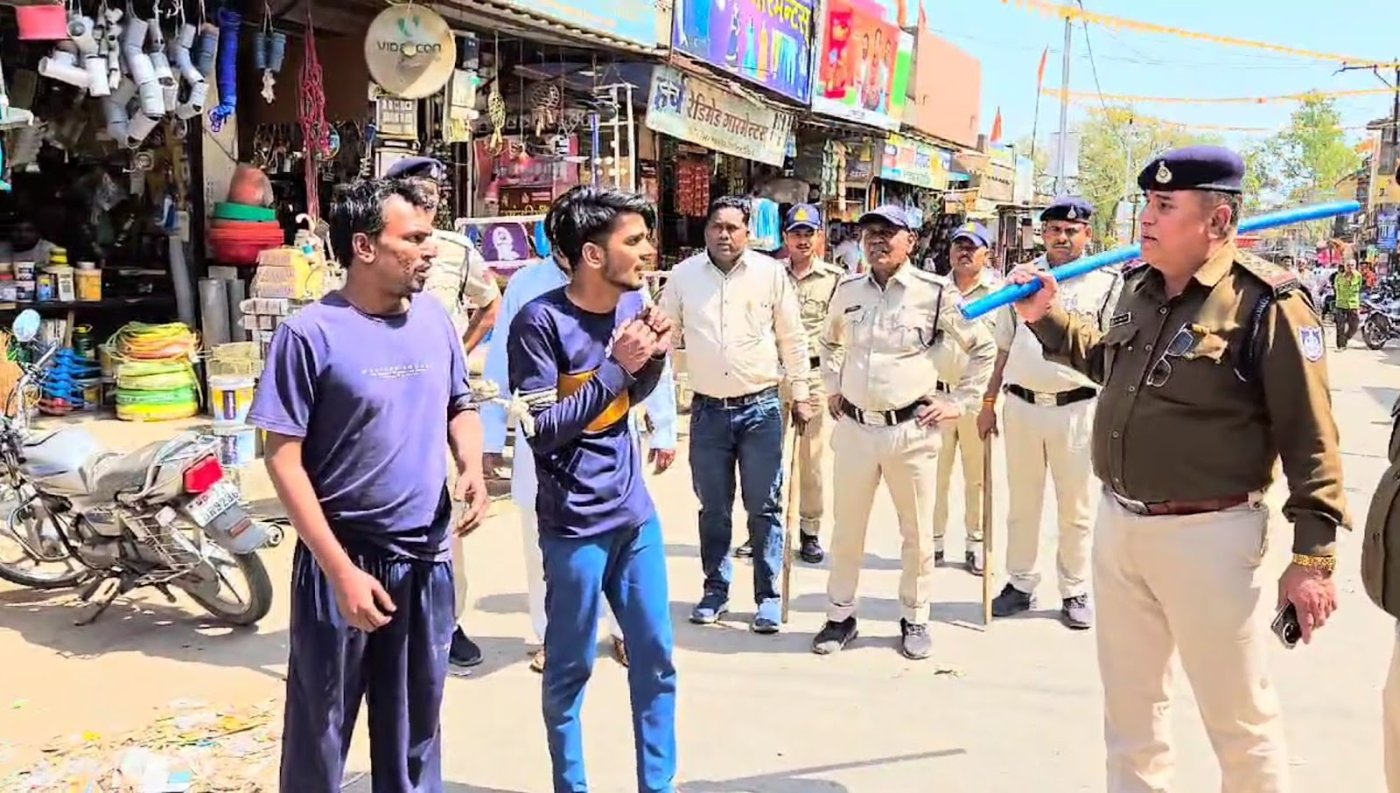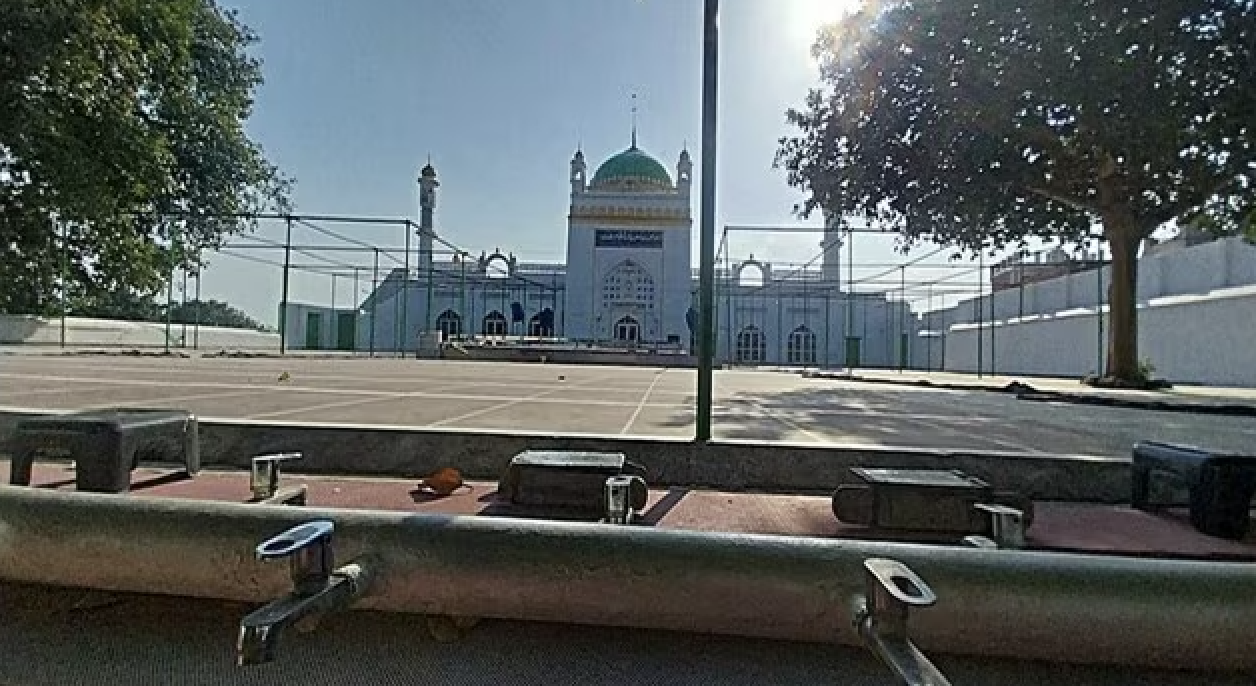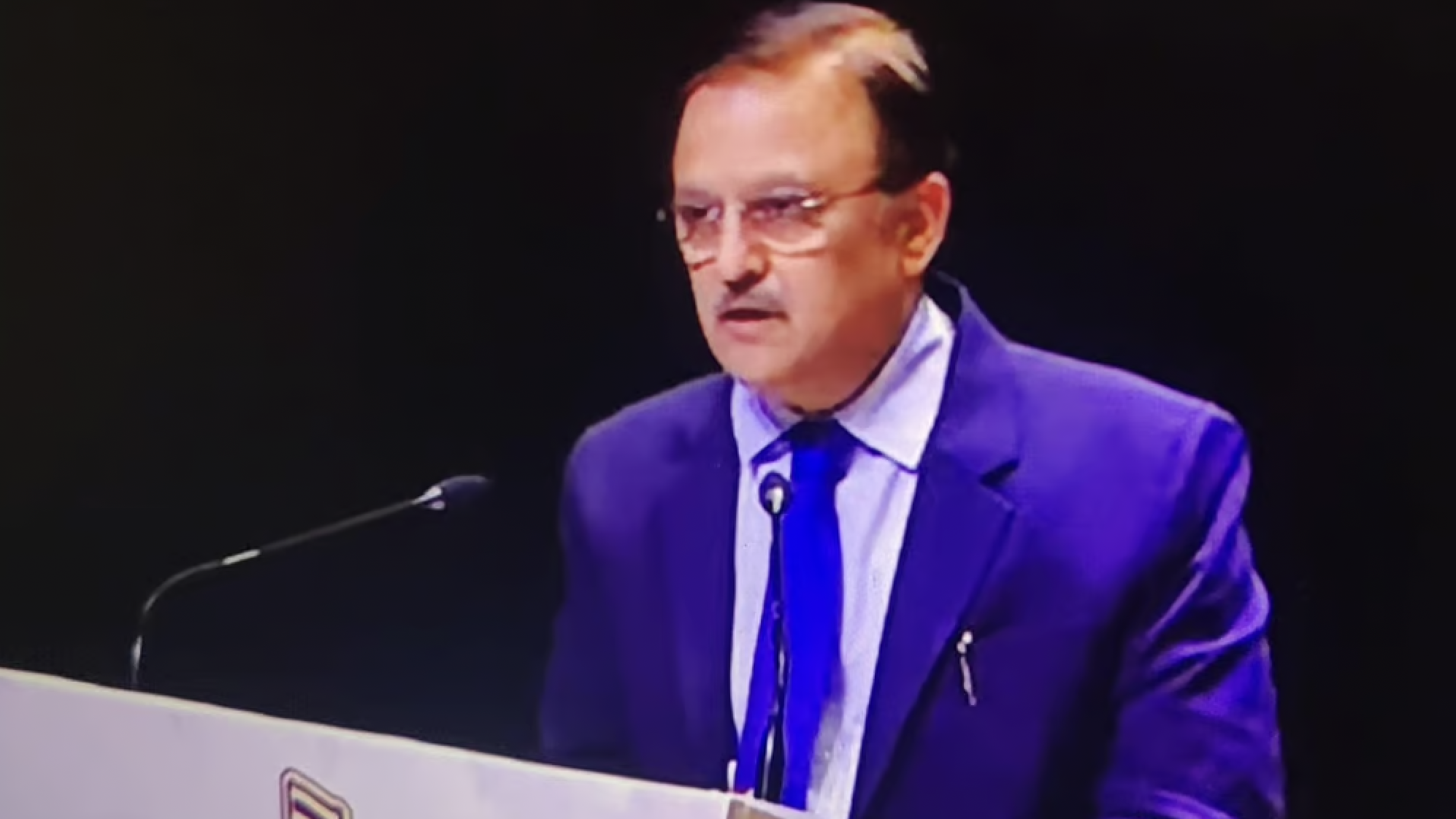
By Ajaz Ashraf / News Click
“In…a world of victims and executioners, it is the job of thinking people, not to be on the side of the executioners,” wrote French novelist and philosopher Albert Camus. Obviously, Camus could not have reckoned with the OpIndia website, which was founded only in December 2014 and has, since then, mastered the art of depicting the executioners as victims—and the victims as executioners.
This is vividly illustrated by OpIndia’s analysis of Ram Navami processions that recently triggered violence in five states—Madhya Pradesh, West Bengal, Jharkhand, Gujarat and Karnataka. The study begins thus: “The attack on Hindu religious processions by Islamists is not a new phenomenon in India. However, when these cases surface each year, several Hindus wake up from their slumber and pretend as if the attacks happened for the first time.”
The OpIndia article invokes history to bolster its assertion. But history can also be re-created by eliding facts.
India’s history, beginning in 1947, is peppered with instances when the Rashtriya Swayamsevak Sangh and its affiliates harnessed religious processions to spawn violence. Their modus operandi: They insist on taking processions through Muslim-dominated areas and chant abusive slogans against Islam and its followers. As the police turn into idle bystanders, Muslims take to pelting stones. At times, it has been difficult to ascertain who chucked stones first. In either case, the fire is lit—and people perish.
Several Commissions of Inquiry have retold this story many times.
SCIENCE PO’S SURVEY
The RSS’ use of religious processions to widen the chasm between Hindus and Muslims can be gleaned from the database on Mass Violence and Resistance prepared by the Paris Institute of Political Studies, popularly known as Sciences Po. The Indian section, written by Violette Graff and Juliette Galonnier, has two parts. Part I deals with communal riots that occurred between 1947 and 1986. Part II analyses the riots between 1986 and 2011.
There are myriad factors behind communal riots. From Science Po’s data, I segregated riots sparked by processions purely religious in nature. Purely religious?
Over the decades, the line between the religious and the political has blurred, particularly during the movement against the Babri Masjid in Ayodhya. For instance, the first stone during the 1992-1993 Bombay riots was hurled during a victory march over the demolition of the Babri Masjid. The slogans chanted during the procession were so abusive of Muslims that they “could not be read out in open court during the hearings of the BN Srikrishna Commission set up to investigate the riots.” I have left out such non-religious processions from this narrative.
Also excluded are religious processions that were a contributory factor in certain riots. For instance, the Raghubar Dayal Commission said the communal tension in Ranchi began to build up after the Ram Navami procession was organised in 1964. It exploded only in 1967.
However, I have included the Ram Shilanyas processions organised in 1989. This involved the consecration of bricks to be used for building a Ram Temple in Ayodhya. Although political in nature, the consecration of bricks, replete with pujas, seemed a purely religious act to participants.
The phenomenon of religious processions preceding riots began in the late 1960s. Perhaps the RSS chose to lie low until then because it wanted its involvement in the assassination of Mahatma Gandhi to fade away from public memory.
And now, Graff and Galonnier’s survey, which I have augmented by my own research to fill in the gaps.
FIRST BIG RIOT
India’s first big riot directly linked to a religious procession, even though quasi in nature, occurred in Bhiwandi, Maharashtra, in 1970. Six years earlier, the Shiv Jayanti Utsav Samiti had publicly celebrated the birth anniversary of Maratha king Shivaji for the first time. In 1969, the Samiti split, and 19 of its members floated the rival Rashtriya Utsav Mandal RUM). “Out of these 19, the first 15 names were either members of the Jan Sangh [the earlier incarnate of the Bharatiya Janata Party] or were pro-Jan Sangh,” noted the Justice DP Madon Commission of Inquiry, which probed the Bhiwandi riots.
In 1970, the RUM insisted that the Shiv Jayanti procession would march through the Muslim area of Nizampura. Muslims protested to the administration, but it was to no avail. On 7 May, as the procession, with participants armed with lathis, wended its way through Nizampura, they took to chanting slogans against Muslims. And Muslims, in turn, hurled stones at the procession. Rioting began—and then spread to the cities of Jalgaon and Mahad. Justice Madon counted 164 deaths, of whom 142 were Muslims.
The violence prompted the state government to ban the Shiv Jayanti procession from being taken out in Bhiwandi. In 1984, however, the Vasantdada Patil government reversed the decision under the pressure of the Shiv Sena and the BJP. A massive police deployment prevented any untoward incident. But it was a significant factor behind the violence that singed Bhiwandi a fortnight later and then spread to Thane and Bombay.
VIOLENCE IN VARANASI
Hindu-Muslim relations in Varanasi are said to be similar to that between warp and weft. On 22 October 1977, the relationship was strained because a Durga Puja procession decided to march through a Muslim area. Since this route had never been taken before, and wiser because of communal tensions kindled by religious processions countrywide, Muslims objected. On the 23rd, an even bigger procession tried to enter the area. Both sides were prepared for a showdown. Violence ensued; the death toll, fortunately, was just ten.
HORRORS OF JAMSHEDPUR
The RSS, in 1978, decided to take out a Ram Navami procession from the Adivasi colony of Dimna Basti. They chose a route cutting through the Muslim locality of Sabir Nagar. But the administration refused permission to the RSS.
On 1 April 1979, Balasaheb Deoras, whom the RSS hails for giving a cutting edge to its Hindutva ideology, injected venom into Jamshedpur’s social ambience with a belligerent speech. On 7 April, a leaflet asking people to forcibly take out the Ram Navami procession on 11 April was distributed. The administration cajoled the Muslims into accepting the route the RSS had earmarked. Doubting the police’s promise of protection, Muslims gathered arms as a precautionary measure.
An estimated 15,000 people turned up for the procession, which stopped near a mosque. Jamshedpur teetered and then erupted. The Jitendra Narain Commission of Inquiry blamed the RSS for creating a climate conducive to communal violence. The 7 April leaflet was “denounced as a challenge to the authorities, a threat to the Muslim minority, and an incitement to violence,” Graff and Galonnier write. The Commission said that out of 108 people who died, 79 were Muslims.
HICCUPS IN HYDERABAD
Days before the Ganesh Chaturthi festival choked Hyderabad, the city had started hiccuping. On 7 September 1983, a mentally challenged Muslim threw a stone at a Hindu temple. Hindus retaliated the next day—a trade union led by a BJP MLA installed an idol in a mosque located on the premises of the Allwyn Metal Factory.
Muslim outfits called for a bandh on 9 September. Stray stabbing incidents were reported; a police officer shot dead two Muslim boys. They should have prompted the administration to impose a curfew on Hyderabad. But it did not, fearing that such a measure would dampen the Ganesh Chaturthi festivities scheduled for 10 September. Between 40 and 70 reportedly died in the Hyderabad violence.
A year later, on 22 July, stones were hurled at a Hindu procession of Kali worshippers in the Muslim-majority of Moghalpura. On 9 September, young participants in a Ganesh Chaturthi procession attacked and set ablaze Muslim shops in the old city. Random stabbings began, leading to 20 people dying.
GARDEN CITY BURNS
In 1989, the Vishwa Hindu Parishad, an RSS affiliate, insisted that its Ram Navami procession in Hazaribagh, known as the city of a thousand gardens, would traverse the “ancient route” along which was located the Jama Masjid. The administration initially denied the permission. But it came under tremendous pressure as the VHP organised a massive demonstration. The go-ahead was given.
On 16 April, as the procession began on the so-called ancient route, a bomb exploded, plunging the city into violence. Although the official death toll was 19, it was said that no less than 100 people perished in the rioting.
KILLINGS IN KOTA
In 1989, Kota in Rajasthan also witnessed killings, not during a Ram Navami procession but one organised to immerse Ganesh idols. On 14 September, a mass of people marched through the town, chanting anti-Muslim and blasphemous slogans. Participants included wrestlers from several akhadas. When the procession reached a mosque in the Ghanatghar area, Muslims responded, according to some, with stones. The mosque was attacked; business establishments of Bohra Muslims were set afire, and anywhere between 16 to 26 people died.
SACRED BRICKS, UNHOLY INTENT
The shilanyas ceremonies of late 1989 sent ripples of tension across north India. In some cities, the ripples turned into a wave of violence, as was true of Bhagalpur, where Hindu groups were granted permission by the administration to take out a Ram Shilanyas procession through the Muslim-majority area of Tatarpur.
The permission was in violation of the Congress government’s directive. On 24 October, chanting anti-Muslim slogans, the procession reached Tatarpur. Its residents denied entry to the procession. A bomb was allegedly thrown from a Muslim school. The police opened fire, and 20 Muslim students were killed.
The rioting spread like a raging forest fire. Muslim passengers in trains were identified and slaughtered. Villages were attacked. For instance, around 4,000 people attacked the village of Lugain, according to the Ramanandan Commission of Inquiry, for nine hours. About 200 people were massacred in that village alone. The official death count was 396, a figure few believed. The late social activist and writer Asghar Ali Engineer, after conducting an inquiry, reported that 896 Muslims and 50 Hindus died. Another 106 went missing. The Bhagalpur riots led to Muslims deserting the Congress.
POLITICS OVER CORPSES
After the horrific scale of violence in Bhagalpur, it seems mundane to describe, in detail, how religious processions were deployed by Hindu radical groups, primarily those affiliated to the RSS, to spark riots. In September 1990, Ganapati processions became a pretext for rioting in Baroda, Anand and Surat. As always, Muslim establishments were targeted. In Baroda, a BJP minister prevented the police from stopping the riots.
In Colonelganj, Uttar Pradesh, Muslims threw stones and bombs on a Durga Puja procession in 1990 in retaliation against participants shouting slogans in support of building the Ram temple. Anything from 42 to 100 people died. By contrast, in the same year, the death count in Kolar, Karnataka, was nine. The rioting here was triggered by Hindu groups destroying decorative illumination organised to celebrate Prophet Muhammad’s birthday. They, in turn, burnt vehicles owned by Hindus, who then retaliated.
On 24 March 1991, in Saharanpur, Uttar Pradesh, a Ram Navami procession was prevented from passing by a mosque where a special Ramzan prayer was underway. Incensed, the Sangh stopped the procession, saying they would not budge unless they were allowed to take their chosen route. On 26 March, the police relented. The procession began; participants took to shouting anti-Muslim slogans near the Jama Masjid and then occupied the stairs leading to the mosque. Around 12 lives were lost in the rioting.
At Sitamarhi, in October 1992, a Durga Puja procession led to a Hindu-Muslim clash, which is said to have claimed 48 lives, a figure contested by then Chief Minister Lalu Prasad. About this riot, Yadav writes in his autobiography, Gopalganj to Raisina, “The riot at Sitamarhi was the only aberration in the cradle of communal harmony that Bihar had become under my rule.” His claim is, indeed, true. He said he stopped the riots by going out in an open jeep and announcing over the megaphone, “Go inside your houses. The police will fire at anyone seen in the open.”
ADITYANATH’S AUDACITY
In October 2005, Dussehra and Ramzan coincided, a godsend opportunity for those in Uttar Pradesh eager to stoke passions. Tension gripped Mau when a scene from the Ramayana was being recited over the loudspeaker near a mosque where a special Ramzan prayer was underway. This was in violation of the agreement reached between Mau’s Hindu and Muslim civil groups. At the request of Muslims, the Hindus agreed to turn off the loudspeaker.
On the following day, the Hindu Yuva Vahini (HYV), founded on Ram Navami day in 2002 by Adityanath, took to using the loudspeaker near the same mosque. Muslims riposted; HYV fired; Muslims looted Hindu shops. A Muslim weavers’ colony was ransacked. Graff and Galonnier write, “The local Hindi media played a dirty role by alleging that [underworld don] Mukthar Ansari was the sole instigator of the riots.”
HYV activists were only imitating their founder’s ways. He had earned notoriety in 2003 when he led a Holi procession that passed near a mosque in Gorakhpur. In the ensuing violence, the imam of the mosque was killed. In 2007, the Shia procession of Muharram came across an inebriated Hindu marriage party in the city. Verbal exchanges snowballed into rioting—a Hindu was badly beaten. Adityanath and HYV activists came to the site and destroyed the tomb of a Sufi saint. He was arrested on 29 January for provoking violence. His supporters wreaked havoc on the city.
THE STORY CONTINUES
Science Po’s data ends at 2011. Yet we know religious processions continue to be used as an instrument for widening the Hindu-Muslim chasm. For instance, in March 2018, Ram Navami processions triggered violence in seven districts of Bihar. In December 2020, processions to collect donations from the Ram Temple in Ayodhya led to rioting in three districts of Madhya Pradesh. On each occasion, the drama of violence had the same old script—Sangh groups organised religious processions through Muslim areas, shouted slogans and, at times, attacked mosques.
This short history of the Sangh’s use of religious processions shows it is as much about Hindu assertion as it is about insulting Muslims, making them feel like aliens in their own land, disparaging their religion, and provoking them into responding. Their response becomes a justification for the Sangh to riot, often with the police looking the other way. Through such tactics, Muslims are projected as assailants and Hindus as victims.
This dubious depiction is amplified on social media and by websites such as OpIndia, in sharp contrast to what Camus said, “In…a world of victims and executioners, it is the job of thinking people not to be on the side of the executioners.” But then, it can always be argued that OpIndia cannot be accused of thinking.
This article first appeared on newsclick.in






